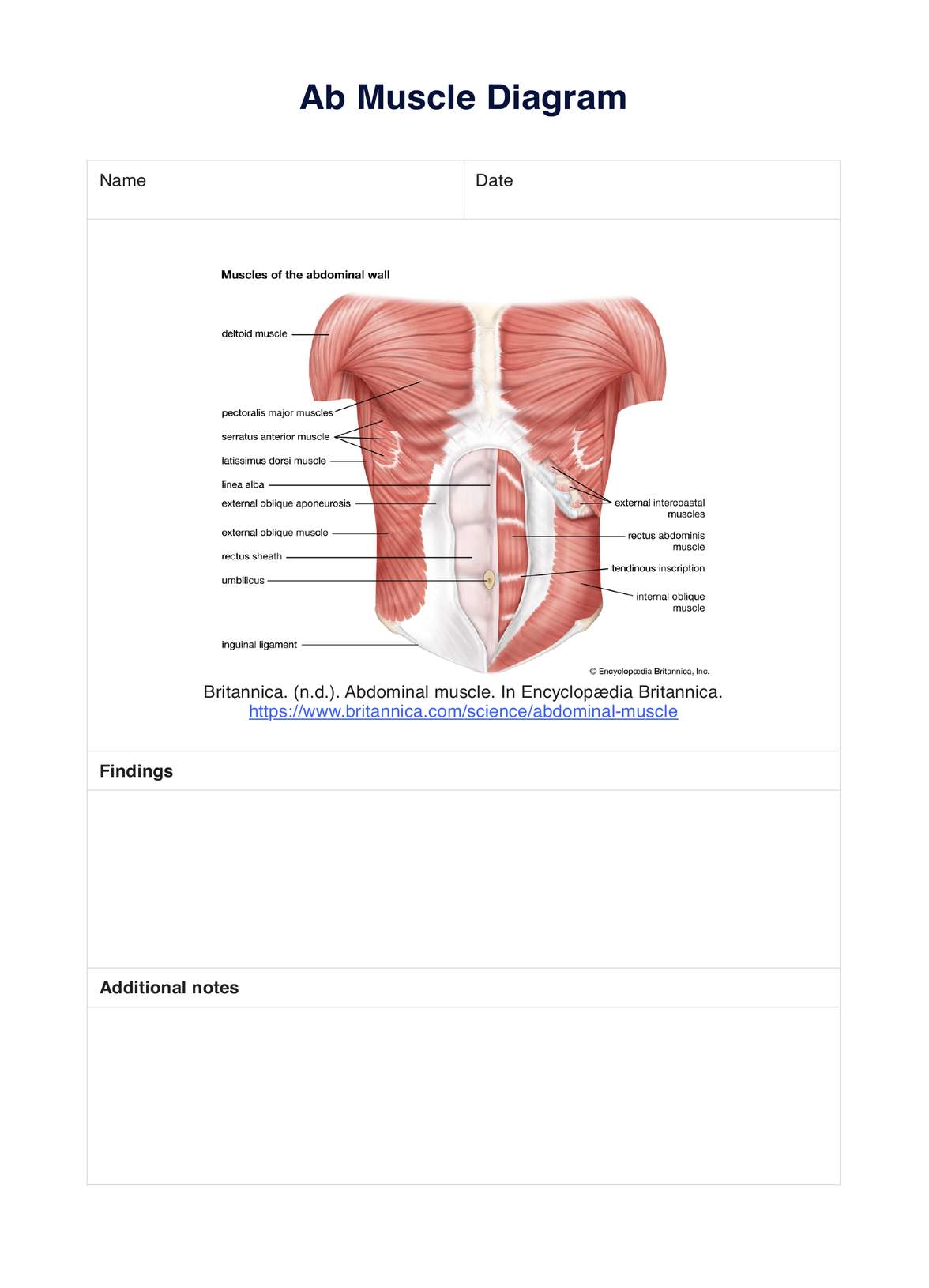You can use the Ab Muscle Diagrams to learn about the different layers and functions of the abdominal muscles. These diagrams can also help you identify specific muscle groups and their roles in stabilizing the spine, supporting posture, and aiding in movement.

Ab Muscle Diagram
Get a free Ab Muscle Diagram for your practice. Learn more about the ab's vital parts and functions in this guide.
Use Template
Ab Muscle Diagram Template
Commonly asked questions
Ab Muscle Diagrams can be used in a clinical setting for patient education and communication. These diagrams can help medical professionals explain the anatomy of the abdominal muscles to patients, aiding in their understanding of their condition or treatment plan.
Yes! Carepatron's Ab Muscle Diagrams can be customized to fit your needs. Add sections, labels, and notes to make the diagrams more personalized for your specific learning goals.
EHR and practice management software
Get started for free
*No credit card required
Free
$0/usd
Unlimited clients
Telehealth
1GB of storage
Client portal text
Automated billing and online payments











